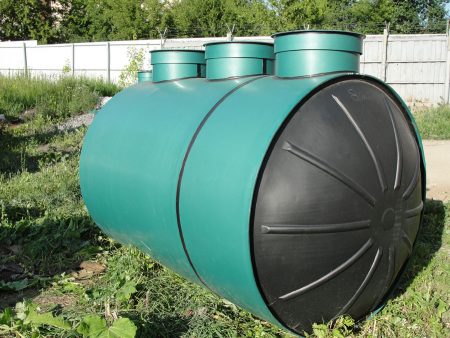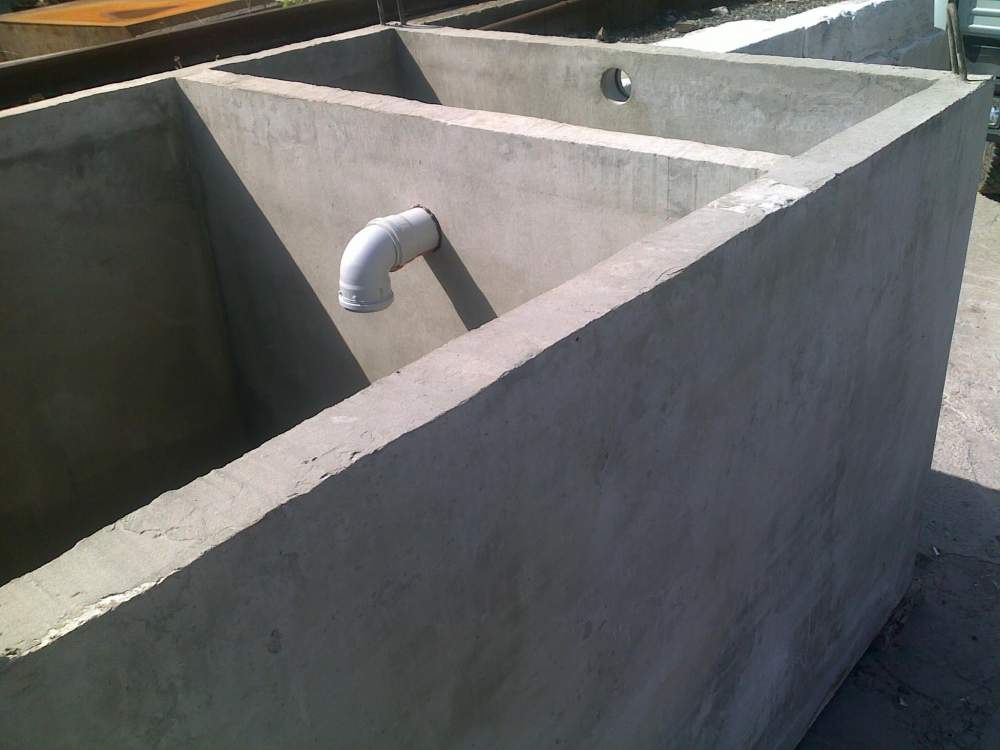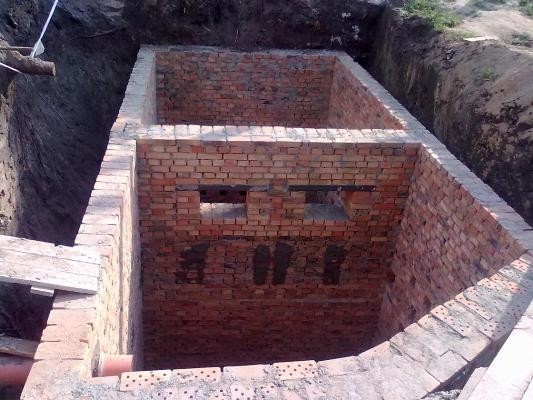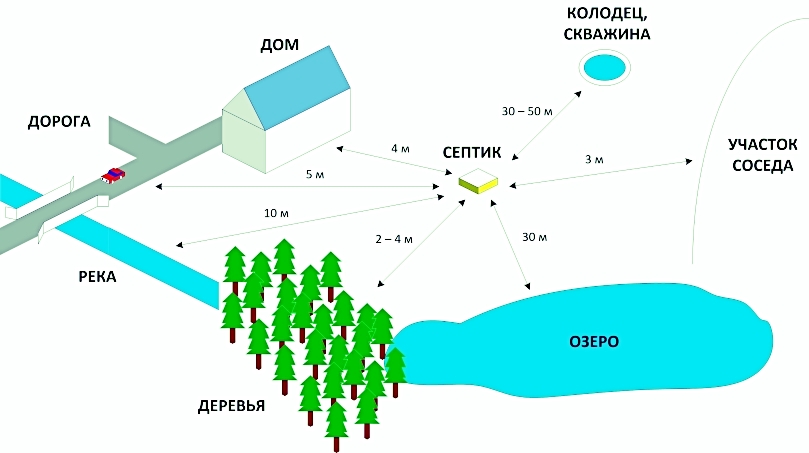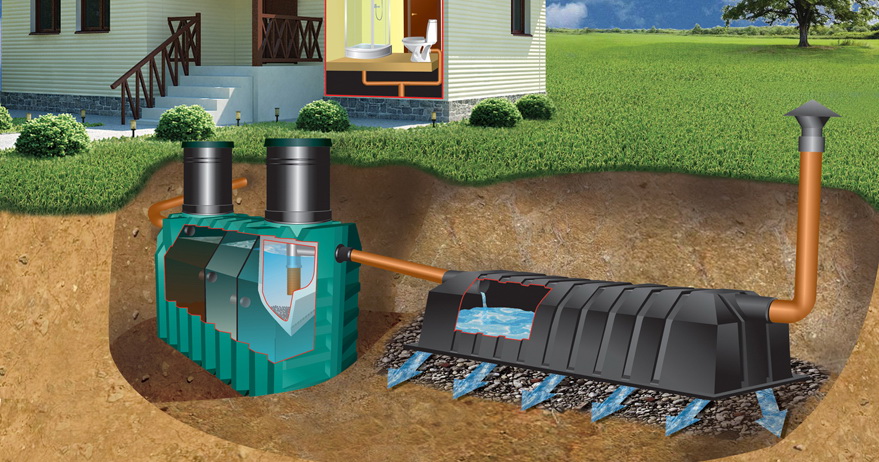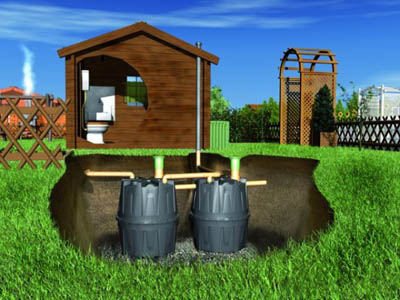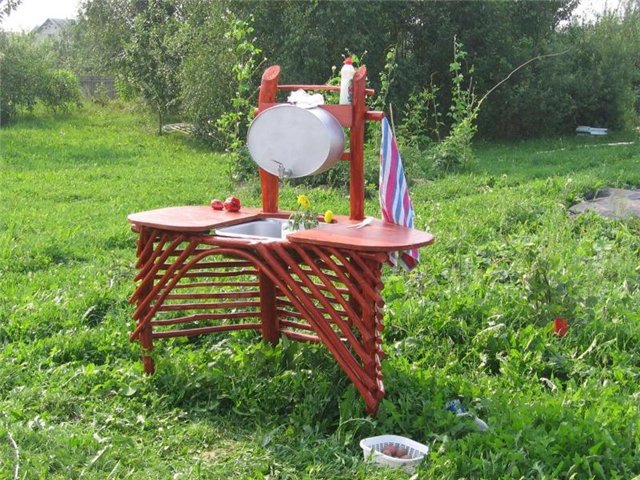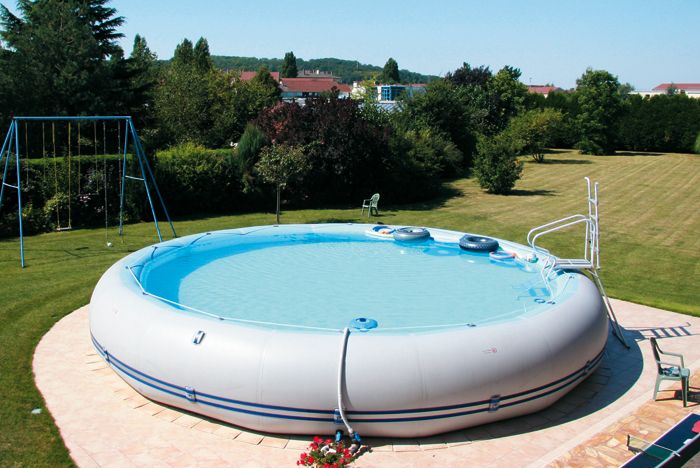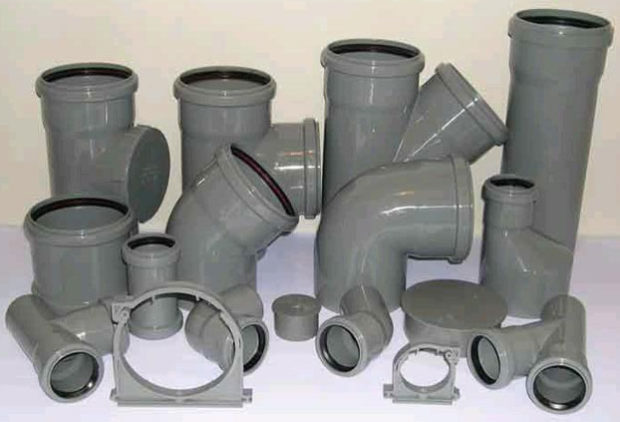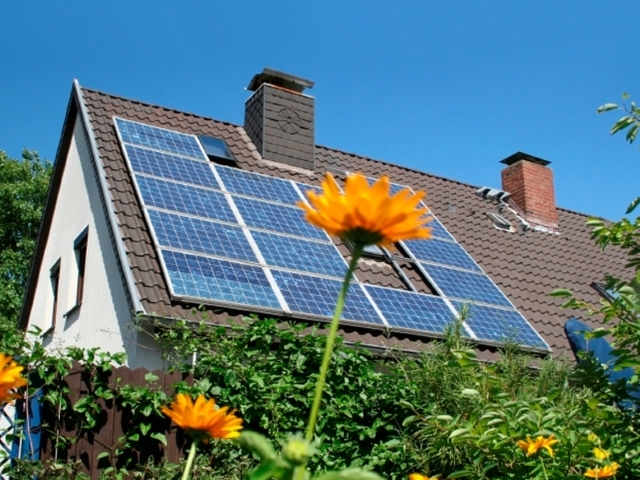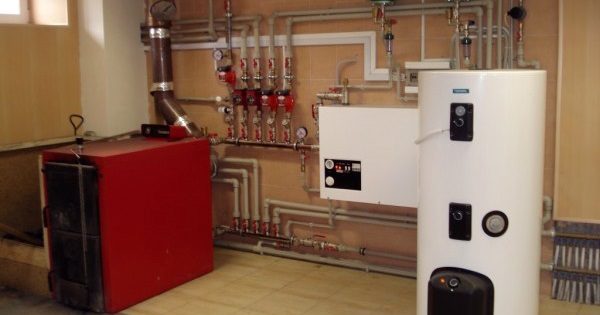6 tips for the location of the septic tank on the site
Many of us remember the times when the top of the improvement of the suburban area was a street toilet and Summer shower. Today, such elements are still found in summer houses, but the requirements for the level of comfort have long grown, and even in nature, modern people do not want to deprive themselves of the benefits of civilization. So humanity came to the idea of installing septic tanks, which allowed equipping the house with a familiar shower and toilet. Septic tanks - This, of course, is convenient and practical, but certain risks are associated with them. To reduce them to a minimum, you need to know all the nuances of the correct location of the septic tank in the area. We study the regulatory framework and expert advice.
Design features of septic tanks
A regular cesspool is not a completely safe solution. The sewage that gets into it is absorbed into the soil and can penetrate into groundwater, and they feed wells that are used to produce drinking water. It turns out that drinking water can become toxic. Of course, with the correct location of the cesspool, it is possible to reduce the likelihood of such a development of events, but nevertheless, the solution has long been out of date. Yes, and why use the old-fashioned method when a modern septic tank is not so expensive, but at times more reliable.
Septics according to the principle of work can be divided into the following types:
- storage tanks - This is an advanced cesspool. A septic tank of this type is a sealed tank in which effluents simply accumulate, from time to time such a septic tank needs to be cleaned. The main advantage compared to the cesspool is that there is no contact of effluents with the soil, and therefore the risk of contamination is minimized. Storage tanks are suitable for cottages where there is little waste water;

- sedimentation tanks allow not only to accumulate, but also to purify waste water, which greatly simplifies the operation process. A septic tank consists of two or three chambers, each of which carries out a certain stage of purification. The first section, as a rule, is the most voluminous. It is intended for the accumulation of effluents and their initial sedimentation, sediment settles at the bottom, and more or less purified water flows into a second tank, where smaller particles go into the sediment. The third tank is a compartment with a biofilter, where water is purified, but it may be absent. Then comes the stage of soil filtration. The solid sediment gradually compacts, and the bacteria contained in the effluent partially process it, therefore it is rare to pump out the septic tank - about once a year. Sumps are relatively inexpensive, but for high-quality cleaning it is necessary to choose containers of sufficient volume, plus take care of arranging soil filtration;

- septic tank with deep bio-treatment - This is already more sophisticated equipment. At the first stage, the effluents settle, and then fall into the section with an aerator. In the presence of air, aerobic bacteria process most of the sediment, then sedimentation occurs again, and purified water can be removed from the septic tank, however, it first passes through a rubble filter. Septic tanks of this type are compact, have a minimal odor, do not require pumping, but are expensive. In addition, it will be necessary to connect electricity, and this is also a cost.

To ensure maximum tightness, it is better to take septic tanks of industrial manufacture, but some masters undertake to make such equipment with their own hands. So in Depending on the material of manufacture of the septic tank there are:
- plastic - The best option in terms of tightness, price, corrosion resistance and weight. Ready-made septic tanks are sold in different sizes, they are designed to process different amounts of sewage.Eco-Septic - online store
 A wide selection of plastic septic tanks offers the company "Eco-Septic". The company's specialists will be able to advise the best model for your particular home, given the volume of drains. If necessary, company employees will come and analyze the features of the site, the level of groundwater and determine the optimal location for the septic tank, taking into account all regulatory requirements. The list of possible services includes delivery, installation and maintenance of equipment, all work is guaranteed.
A wide selection of plastic septic tanks offers the company "Eco-Septic". The company's specialists will be able to advise the best model for your particular home, given the volume of drains. If necessary, company employees will come and analyze the features of the site, the level of groundwater and determine the optimal location for the septic tank, taking into account all regulatory requirements. The list of possible services includes delivery, installation and maintenance of equipment, all work is guaranteed.
- reinforced concrete septic tanks can be monolithic or prefabricated. The latter are mounted from concrete ringsbut the tightness of such a design becomes worse over time. Monolithic structures are more reliable, but it is more difficult to mount them. The main minus of concrete septic tanks is a lot of weight;

- brick septic tank You can even lay it out with your own hands, and make tanks of any shape and size. Minus - insufficient tightness, even if the work on waterproofing;

- metal septic tanks used extremely rarely. Although they are durable, they are lightweight and easy to install, but under the constant influence of sewage they quickly rust and lose their integrity.

Home-made septic tanks, which are made of bricks, concrete rings, tires and plastic containers, are able to clean drains by 60% and no more, while industrial septic tanks can cope with this task much more efficiently, cleaning sewage by 99%. But even the most expensive industrial septic tank is not a guarantee of complete comfort and safety. You need to know where to place the septic tank so that an unpleasant smell does not penetrate into the house, and toxins from drains in drinking water.
What is dangerous septic tank?
The septic tank is associated with the following risks to humans and the site:
- flooding of buildings;
- contamination of the site with sewage during overflow and untimely cleaning of the septic tank, or during floods;
- the most important hazard is the ingress of waste into the soil and aquifers, i.e. literally to you in a glass. How can this happen if the plastic tank is durable and tight? There are several reasons for this. These are errors during installation, errors in choosing a place for a septic tank on a site, as well as pipe rupture and depressurization of joints. Alas, no one is safe from emergencies - we can only reduce the severity of possible consequences, and this is possible if you find the most suitable place for the septic tank, away from wells, wells, water bodies.
Of course, ideally, it is better to choose a place for a septic tank at the planning stage of the entire site. Then it will turn out to arrange all the buildings and communications in an ideal way. But more often you have to look for a suitable place when both the house with the shed is built and the plot is ennobled. In this case, it is better to draw a site plan on a scale, designate a house, all outbuildings, fence, neighboring houses, trees, wells and wells. Then you need to arm yourself with a ruler and look for the best place so as not to violate any of the rules listed below. If independent surveys have not yielded results, it is better to call for help from specialists who will additionally analyze the type of soil, the depth of the groundwater and indicate the best location and depth of the septic tank.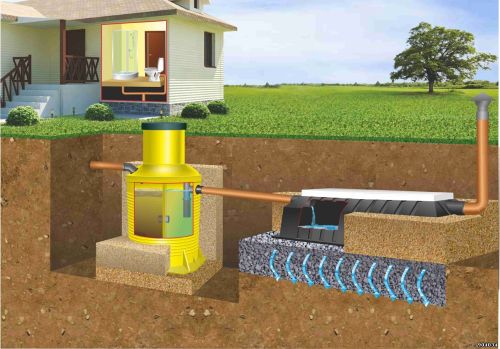
Regulatory framework
The issue of the location of the septic tank on the site concerns several documents, therefore you will have to deal with each of them:
- SanPiN 2.2.1 / 2.1.1.1200-03 regulates the requirements for sanitary zones around objects potentially hazardous to the environment;
- SNiP 2.04.03-85 - rules for the organization of external sewer networks;
- SNiP 3.05.04-85 and SNiP 2.04.01-85 - requirements for external and internal water supply and sewage systems if a well or a well is used as a water source;
- SanPiN 2.1.5.980-00 - requirements for measures aimed at ensuring the purity of surface waters.
All the numbers, details and requirements in these documents are set out in detail, but we will give all the most basic data below so that you have an idea about the process of selecting a place for a septic tank. But just to take and start digging a pit to install a tank in a certain place will not work. First you need draw up a construction project, which will be approved by the SESand if all goes well, you will be given a building permit. A project can be prepared independently if desired and with proper skills, but many still prefer to turn to specialists.
Next, we study the basic requirements for the location of the septic tank on the site, the specific norms of the distance from it to other objects.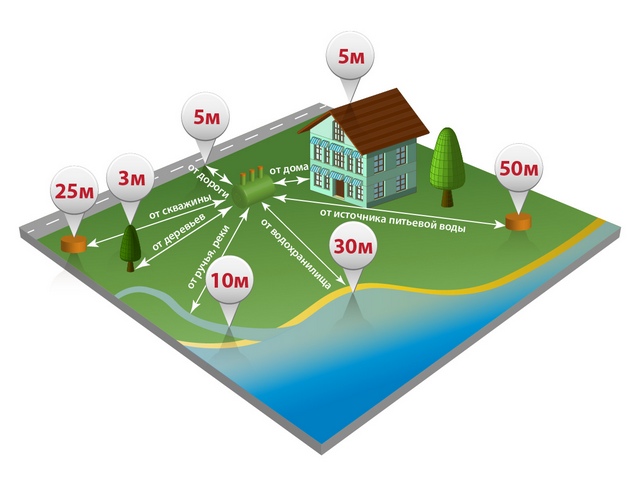
Septic, buildings and communications
Most often, owners of suburban real estate are interested in how far from the house it is better to place a septic tank. It seems that the cheapest thing is to put it right next to the walls, but at the same time, it is scary to do this, as there is a risk of unpleasant odors entering the house. Standards advise to adhere to the following:
- from the foundation of the building to the septic tank should be at least 5 m;
- if the distance is less, this promises not only aromas, but also the possibility of flooding the house during an accident or, for example, in the spring with a sharp melting of snow;
- too careful not to be too, because a long pipe system is more expensive, more complicated, and blockage risk higher. If there is no other option, then for every 10-15 m of sewage, an inspection well is provided;
- the distance between the septic tank and the outbuildings should be at least 1 m;
- the distance between the septic tank and the water pipes is at least 10 m;
- in the presence of an underground gas pipeline, it is necessary to maintain a distance to it of at least 5 m;
- the distance between the septic tank and fruit trees is 3-4 m. If less is done, then the roots run the risk of rotting, and the plants themselves get saturated with harmful substances.

Septic tank, fence and neighboring plot
When planning the location of a septic tank, one has to take into account the neighboring areas:
- First of all, you must take into account all the same requirements that apply to your own site. So your septic tank should be located at least 5 m from the neighbor's house and 4 m from the trees, also do not forget about the optimal distance between the septic tank and the communications;
- the distance between the septic tank and the fence with the neighboring plot is at least 2 m;
- the distance between the septic tank and the road is at least 5 m. Do not forget that septic tanks periodically need maintenance, so it is necessary to provide for the possibility of access for special vehicles.
Septic tank and wells
The most important thing when considering a place for a septic tank is to ensure its sufficient distance from the well, well and natural water bodies. The goal is to find a place on the site so that even in an emergency, the sewage does not mix with clean water. Permissible distance is calculated taking into account the type of soil, takes into account the relationship between the filter and the aquifer:
- the minimum distance from the septic tank to the water intake point is 25 m (if clay lies between the septic tank and the water intake), the maximum is 50 m (with the predominance of sand and loam). Hydrogeological studies will help determine the type of soil;
- between the well and the septic tank should be at least 50 m;
- between the septic tank and the pond, lake, other objects with stagnant water should be at least 30 m;
- between the septic tank and the river, stream, other body of water with running water should be at least 10 m.

It is optimal to have a septic tank lower than the water intake facilities, but this is not possible for all sites.However, it is impossible to hide a septic tank in a lowland, otherwise, during floods and heavy rain, the container may overflow.
It is necessary to consider and the depth of groundwater. The arrangement of an underground septic tank is possible with a depth of at least 1.5 m. If the groundwater is located higher, then you will have to install an above-ground treatment system.
It is also important to consider soil freezing depth. Ideally, a septic tank should be placed below this level so that in winter there are no problems with frozen sewer and with all the ensuing consequences. If it is impossible to fulfill this recommendation, then it is necessary to qualitatively insulate pipes, or, as an option, install heating cable.
If, after independent attempts to choose the best place for a septic tank, you have a feeling that the calculation is not entirely correct, it is better, of course, to seek help from specialists.



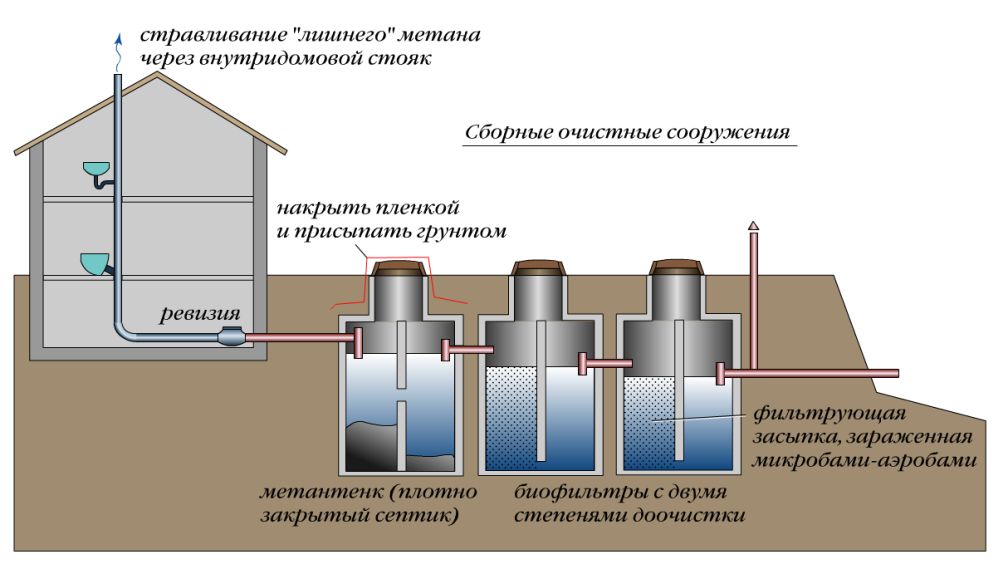
 A wide selection of plastic septic tanks offers the company "Eco-Septic". The company's specialists will be able to advise the best model for your particular home, given the volume of drains. If necessary, company employees will come and analyze the features of the site, the level of groundwater and determine the optimal location for the septic tank, taking into account all regulatory requirements. The list of possible services includes delivery, installation and maintenance of equipment, all work is guaranteed.
A wide selection of plastic septic tanks offers the company "Eco-Septic". The company's specialists will be able to advise the best model for your particular home, given the volume of drains. If necessary, company employees will come and analyze the features of the site, the level of groundwater and determine the optimal location for the septic tank, taking into account all regulatory requirements. The list of possible services includes delivery, installation and maintenance of equipment, all work is guaranteed.